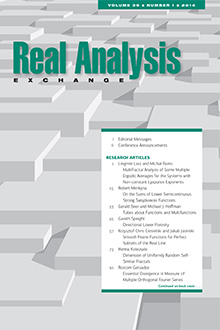Abstract
In 2001, Cs\" ornyei, O'Neil and Preiss proved that the composition of any two Darboux Baire-1 functions $[0,1]\rightarrow [0,1]$ possesses a fixed point, solving a long-standing open problem. In 2004 Szuca proved that this result can be generalized to any $f$ in the class $\cal J$ of functions $[0,1]\rightarrow [0,1]$ with connected $G_\delta$ graph. As a consequence, he proved that for such functions the Sharkovsky theorem is satisfied. As the main result of this paper we prove that as for continuous maps of the interval, any $f$ in $\cal J$ has positive topological entropy if and only if it has a periodic point of period different from $2^n$, for any $n\in\mathbb N$. To do this we show that using Bowen's approach it is possible to define topological entropy for discontinuous maps of a compact metric space with almost all of the standard properties. In particular, the variational principle is true, and consequently, topological entropy is supported by the set of recurrent points. We also develop theory of recurrent, $\omega$-limit, and nonwandering points of functions in $\cal J$ since, in general, standard results from the topological dynamics, are not true. For example, there is a Darboux Baire-1 function $f$ (hence, $f\in\cal J$) such that neither the set of recurrent points nor the set of $\omega$-limit points of $f$ are invariant.
Citation
Michaela Čiklová.
"Dynamical systems generated by functions with connected
Information





